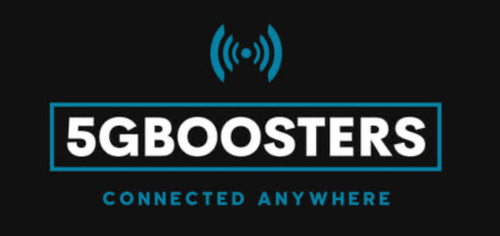Ever found yourself stuck deciding whether to buy a Starlink dish or a cellular booster to improve voice calls and mobile data while travelling in remote or rural Australia? Let’s break down the pros and cons of both options to help you stay connected in fringe areas.
What is Starlink, and How Does It Work?
Starlink is a satellite internet service from SpaceX. It uses a constellation of low Earth orbit (LEO) satellites to deliver broadband directly to users. To connect, you’ll need a satellite dish (or "user terminal") and a router. The internet is delivered via Wi-Fi or a wired connection.
What is a Cellular Booster, and How Does It Work?
A cellular booster or repeater on the other hand is a device that enhances existing signals that are available from a carrier’s nearby tower. This technology requires two antennas (External and internal) and the repeater itself. Signal booster improves the voice, text and data connectivity for mobile devices with this technology. So, it does not provide a new internet or voice plan, instead it improves the quality of the user’s existing plan.
Comparison at a Glance
|
|
Booster |
Starlink |
|
Connectivity Source |
Depends on existing cell network. Amplifies and broadcasts 3G/4G/5G weak signal. |
Standalone internet service provider (ISP) that delivers internet directly via satellite. |
|
Hardware Requirements |
An external antenna (to capture signal), an amplifier and an internal antenna (to rebroadcast amplified signal). Requires some signal to work with. |
A satellite dish, a power source, and a router. Requires clear sky view. |
|
Coverage Scope & Footprint |
Boosts cellular coverage within a limited range (e.g., a room, house, or vehicle), depending on the device’s power and antenna placement.
Up to 30,000 sq ft (CEL‑FI GO) |
Provides internet over a wide area (e.g., a home or property) wherever the dish can connect to satellites, making it ideal for remote locations with no terrestrial options.
~3,200 sq ft per dish
|
|
Download Speed |
5-20 Mbps (avg rural 4G) |
25-100 Mbps (residential) 5-50 Mbps (roam) |
|
Upload Speed |
1-5 Mbps |
5-25 Mbps (residential & roam) |
|
Latency |
30-70 ms |
40-80 ms (residential) 60-100 ms (roam) |
|
Mobility |
✅ Vehicle & on‑the‑move ready |
🚫 Stationary unless you pay for Roam plan |
|
Power Consumption |
10–25 W (vehicle) / 20–50 W (home) |
75–100 W continuous |
|
Monthly Fees |
None beyond your existing plan |
AUD 80 (50 GB) AUD 195 (unlimited Roam) |
|
Weather Sensitivity |
🌧️ Minimal (works indoors) |
🌥️ High (needs clear sky; foliage/buildings block) |
|
Use Case |
Improves cellular services for calls, texts and mobile data. Complements and existing cellular plan. |
Complements broadband internet needs like browsing, streaming or remote work in remote locations where cellular networks are not available. |
Starlink Competitive Advantages
Broadband Speed:
Starlink provides a broadband like download speed ranging from 25-100 Mbps, far from many cellular networks.
Internet Anywhere:
It works almost anywhere with a clear sky view which makes it a game-changer for remote or fringe areas where cellular networks does not exist.
Independent of infrastructure:
Starlink is independent of local infrastructure which makes it immune to outages caused by damaged cell towers.
Scalability:
Supports multiple devices via Wi-Fi, suitable for households or small businesses needing robust internet.
Starlink Competitive Disadvantages
High Operational Cost:
The hardware for Starlink costs around $599-$2500, plus a recurring monthly fee starting from $80 monthly for a 50GB plan and $195 monthly for an unlimited plan for ROAM plans. Which is huge compared to a booster’s one-time hardware cost.
Clear View Requirement:
It is required to have a clear sky view to get a good signal for Starlink. Therefore, dense forests, tall buildings or gloomy weather can disrupt service. If you intend to go for a trip to a known rainforest, you have to think twice before purchasing a Starlink device.
Power Hungry:
It is a power hungry device. It requires an average of 75-100 watts in a constant basis, which may necessitate a generator in off-grid scenarios.
Limited Mobility:
The standard residential plan isn’t designed for use in motion. Rather, you have to go for pricier ‘roam’ packages to use in motion.
Cellular Booster Competitive Advantages
Cost-Effective:
No monthly subscription beyond your existing cellular plan; it’s a one-time hardware purchase.
Hassle Free:
It does not require complex setup. It’s kind of plug and play with your existing cellular plan.
Mobility:
Ideal for travelers due to its portability (e.g., for vehicles). It is a perfect solution for great places with faint but existent cellular coverage.
No Monthly Expense:
It leverages your existing monthly plan. So, you don’t have to take the burden of new monthly cost for internet. The best thing is it improves all cellular facilities- voice, data and SMS.
Greater Range:
Cellular boosters offer a greater range than Starlink devices. The CEL-FI GO stationary solutions can cover up to 30,000 sq. ft. whereas Starlink can cover only up to 3200 sq. ft.
Cellular Booster Competitive Disadvantages
Signal Dependency:
Cellular Boosters are signal dependent. Meaning, you can only get benefit from those where there is some sort of signal.
Limited Bandwidth:
Boosters will provide slower internet compared to Starlink’s broadband. (e.g., rural 4G might offer something like 5-20 Mbps).
Let's find out which one is cost-effective
Cost‑of‑Ownership Calculator
So, Starlink shines as a standalone internet solution for remote locations, offering high-speed internet. However, it is expensive, requires setup, is dependent on clear skies and offers a shorter range.
On the other hand, cellular boosters excel at enhancing existing cellular service with a one-time cost, greater range, and hassle free setup and with the roaming benefit. The good thing is that it improves your overall cellular service. But, it is dependent on signal existence!
So, just put all the advantages and disadvantages side by side and decide on the one that suits your need!

